In the nearly dozen years of Vestron’s existence, the scrappy video outfit released an eclectic blend of films to the at-home market, satisfying almost every niche it could in an attempt at rental dominance. From A-list glitz (with such titles as DIRTY DANCING and AN AMERICAN WEREWOLF IN LONDON) to B-movie Cannon fodder to special interest titles geared towards the wrestling, videogame, aerobics and National Geographic markets, the late and lamented Vestron — now making a comeback via a series of spiffy Blu-Ray releases of some of their OOP and never digitally released catalogue titles — did it all. So it is with no great surprise that the distributor would also attempt to crack the arthouse world, as they did with a pair of alluringly strange and long forgotten films from their heydey: Avery Crounse’s mystical period horror EYES OF FIRE and Bernard Rose’s coming of age dark fantasy PAPERHOUSE.
Long before THE WITCH frightened audiences with it’s blend of chilly deep woods occultism and Puritan language, Crounse delivered a dose of early Americana horror with the surreal EYES. iN 1750 New England, a righteous but licentious reverend, Will Smythe (Dennis Lipscomb) nearly avoids a death sentence for adultery and polygamy with the secret help of one of his lover’s, a secret white witch Leah (Karlene Crockett.) In exchange for his life, Will agrees to exile, surrounded by Leah, Eloise — the married woman who also had an affair with Will, thus bringing on their punishment — and a gaggle of loyal followers and supporters, who embark on a journey down river to settle their own village. What initially begins as a happy journey born out of traumatic circumstance turns increasingly dire as the film progresses, as the religious flock encounter dangers both natural and supernatural that whittle them down, emotionally and physically.
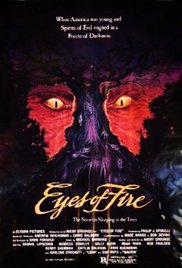
EYES OF FIRE is essentially Crounse’s budget-challenged regional-horror version of AGUIRRE, WRAITH OF GOD. A charismatic, persuasive and deeply flawed leader — a pompous preacherman whose hedonistic appetites outstrip his devotion in place of a crazed and greedy conquistador — leads a band on a journey into a heavily forested heart of darkness where death and damnation await. The further down they drift, the more lurks in the woods. They are beset by hostile Native tribes and rival fur trappers and the ravages of nature, but when they encounter a little Native girl — who Smythe believes to be sent from the tribe to be baptized — things turn even worse, as supernatural forces begin to encroach from the wilds beyond, and it isn’t long before nude dancing sprites and faces in trees begin appearing in delirious lo-fi visions.
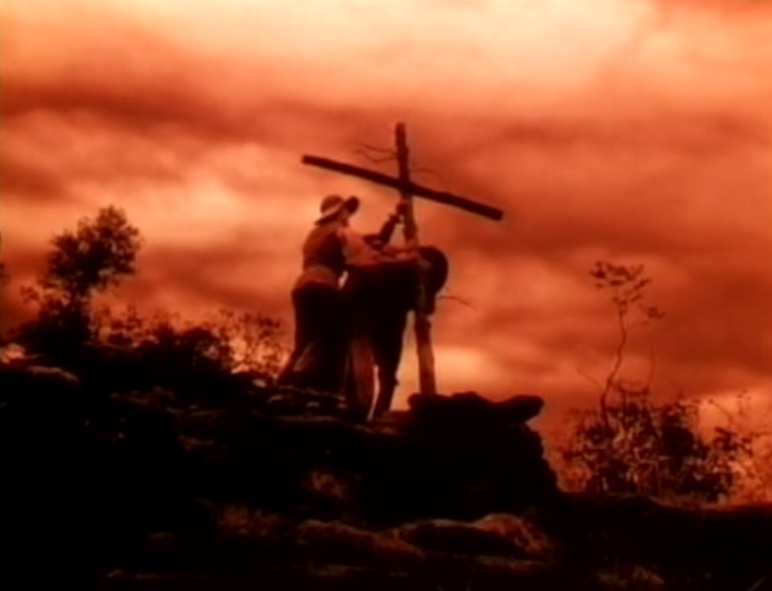
EYES OF FIRE is told in flashback, as young survivors of the journey relay their story to rescuers, and it gives the film a mythic, folkloric quality. It’s no surprise that the movie only made back a tiny fraction of its already meager budget. 1983, when the film initially came out theatrically (it would be another four years before it made its Vestron debut), was still at the tail end of the more vulgar slasher boom and audiences were not in the mood for a slow moving work of folk horror. Which is unfortunate, because they missed a literate work of unnerving eeriness.

The solarized special effects Crounse often deploys to bring his ghostly threats to life are often incredibly dated, looking something out of a aged educational video, but they also add to the unreality of the film, their rudimentarily digitized aesthetic a sharp contrast to the muddy earthiness of the settin, a muddiness only exacerbated by the fifth-gen VHS murkiness of the version I saw. That murk doesn’t detract from Crounse’s — a former photographer — eye for startling weird visions and penchant for accumulating creeping dread. EYES OF FIRE may not be much more than a bargain bin version of Herzog and Lynch, but there’s far worse icons to emulate.
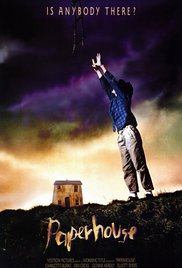
PAPERHOUSE, meanwhile, also prizes a measured pace over abrupt shocks. Released in the late-’80s glut of post-NIGHTMARE ON ELM STREET “rubber reality” pictured, Bernard Rose’s film (it earned him the gig of directing CANDYMAN) eschews the supernatural-slasher elements of brethren like BAD DREAMS, SHOCKER, and HELLO MARY LOU: PROM NIGHT 2 for a more genre-tinged adolescent drama in the vein of SPIRIT OF THE BEEHIVE, THE REFLECTING SKIN and the upcoming A MONSTER CALLS.
Anna Madden (Charlotte Burke) is an average young girl with a somewhat lonely and driftless existence ever since her father left. Though a good student, she isn’t above causing mischief and talking back, and is prone to mild narcoleptic episodes. After passing out on night in the woods after skipping school, she’s transported to a dream realm that corresponds perfectly with a drawing in her notebook.
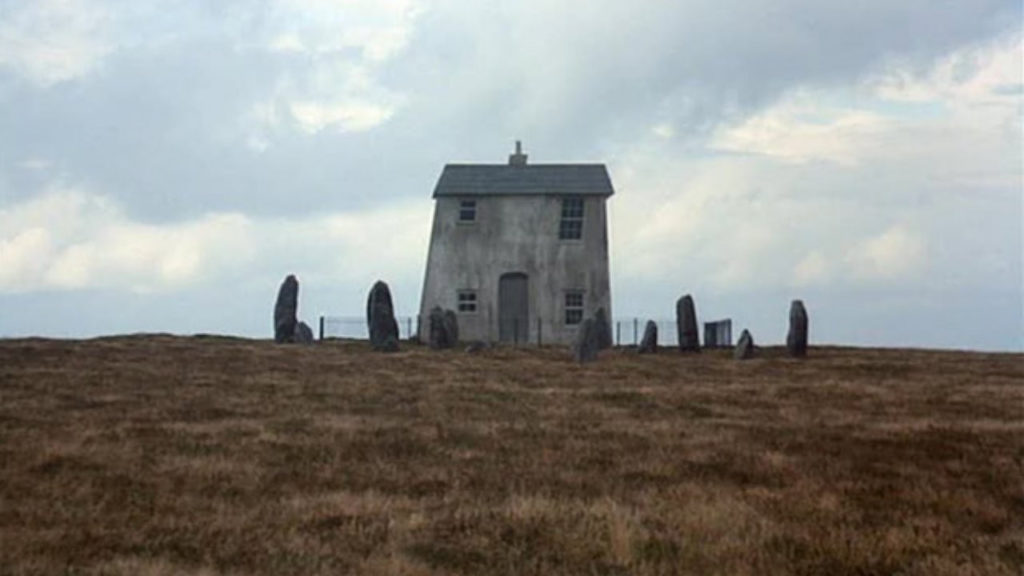
With each addition to her drawing, Anna makes a return trip in her dreams to the slanted, isolated cohome in her books. When she draws an unhappy young boy in a window, it manifests itself in Marc (Elliott Spears), a sad young man who can’t walk (Anna forgot to draw legs) and lives a solitary existence in the barren home.
Anna soon realizes that she has the power to affect this imaginary-or-is-it? dream world with the power of her pencil, every new drawing influencing this other reality like a God. Horror rears its head when she makes the mistake of drawing her estranged father into the picture, and he appears as a menacing figure in shadows looming over a hill and looking to harm Marc.
The metaphor is incredibly heavy handed (the subtext barely sub) but it doesn’t detract from the melancholic fairy tale world Rose conjures. The film shuffles between Anna’s dull reality, shuttling between a dreary school and a home life with her struggling single mum, and visits with a kindly doctor who happens to treating a boy with Marc’s exact same symptoms, and Anna’s heightened dream world.
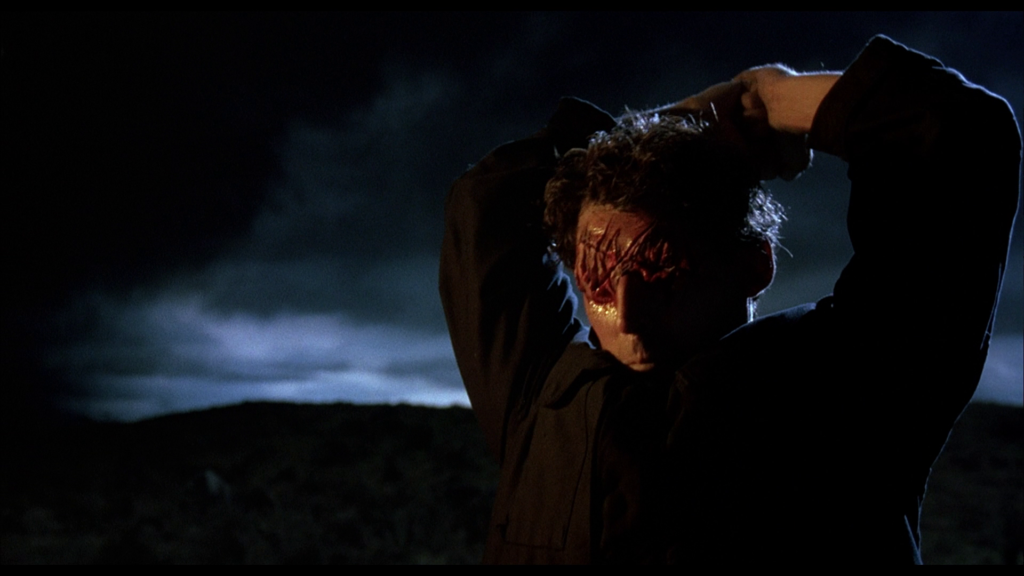
It’s in this dream world where the film really comes alive. Its in part due to the production design work of Gemma Jackson, who lends the reality a credible day by day dreariness while giving the fantasy realm a believably childlike construction, all canted angles and broad detail-less shapes. The skewed, leaning home of Marc lives in a desolate but bucolic grain field that gives the film an atmosphere of eternal autumn while the house itself, with its deep gray monotone colors, an emblem of grasping loneliness.
It’s unfortunate that neither PAPERHOUSE nor EYES OF FIRE have ever been made available on any kind of digital format, existing only in their original Vestron forms, which have no doubt degraded to a murky smeariness with age (just watch any ripped from VHS bootleg.) With the company, whose library is now the domain of Lionsgate, now functional again, re-releasing classic titles of theirs like CHOPPING MALL and BLOOD DINER to the collector’s niche market, here’s to hoping that these more adventurous offerings get their own due as well.
Tags: Avery Crounse, Ben Cross, Bernard Rose, Brad Fiedel, Charlotte Burke, Elliott Spiers, Gemma Jones, Glenne Headly, Hans Zimmer, Vestron Pictures, Vestron Week

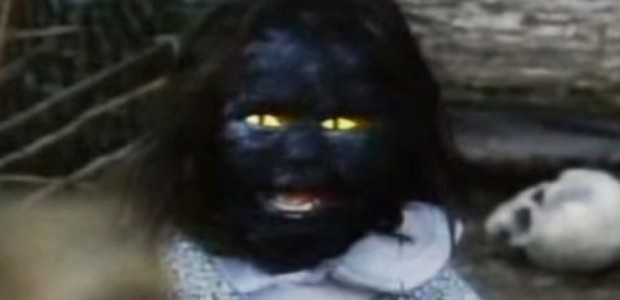
No Comments